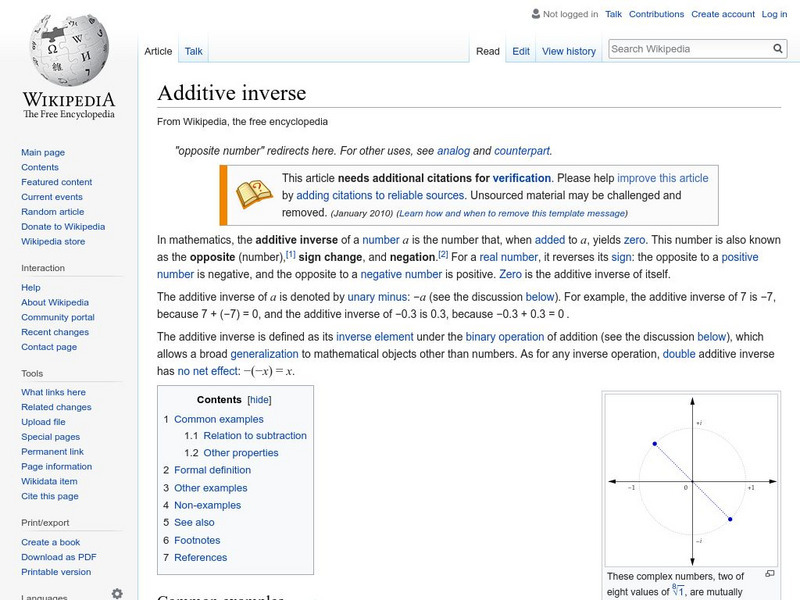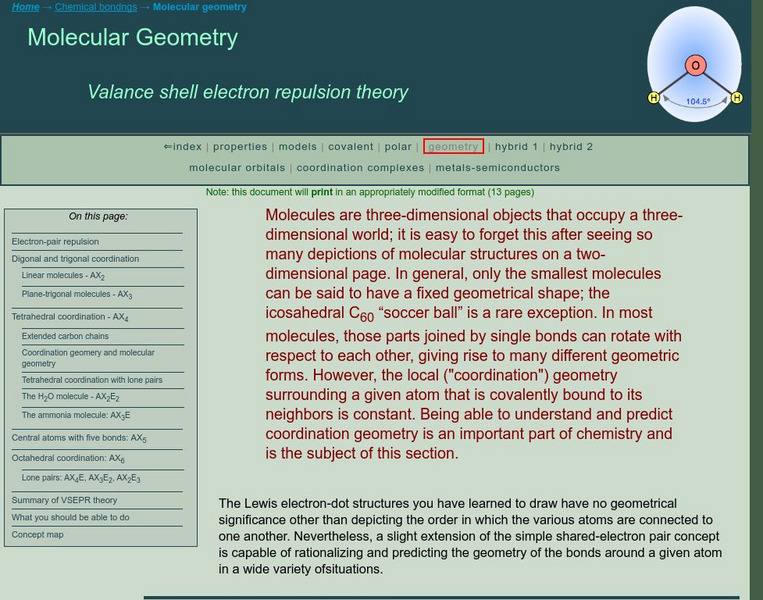Fun Music Company
Relative Major and Minor
It's all relative. Young music theorists are asked to count to three and identify the relative major and minor keys of keys that share the same signature.
National Institute of Open Schooling
Coordination Compounds
Cyanide, a coordination compound, is used in the extraction of gold and silver. Part 24 in the series of 36 delves into the world of coordination compounds. Classes learn, through readings, discussions, and answering questions, how to...
National Institute of Open Schooling
Chemical Bonding
Name is Bond, covalent bond. Through readings and answering questions, classes explore the different types of chemical bonds, their characteristics, valence shell electron pair repulsion theory, and atomic orbitals.
Old Dominion University
Introduction to Calculus
This heady calculus text covers the subjects of differential and integral calculus with rigorous detail, culminating in a chapter of physics and engineering applications. A particular emphasis on classic proof meshes with modern graphs,...
Liberty High School
Science Department Lab Report Format
Make sure your scientists are reporting their work effectively by providing them with a reference for their lab reports. The first few pages of this resource detail each element of a lab report, and the last few pages provide an example...
Ballet Austin
The History of Modern Dance
The evolution of modern dance, and the dance history of many of the key figures in the development of this uniquely American form, are the focus of a 13-page packet that includes photos of revolutionaries.
Georgia State University
Georgia State University: Hyper Physics: Ideal Gas Law
This site defines and discusses the ideal gas law. The concept of state variables is explained and the various state variables are identified. Links to further information is available.
Wikimedia
Wikipedia: Additive Inverse
What is additive inverse? It means "opposite." Find out more about this concept in this detailed definition with examples and links to related terms.
Tour Egypt
Tour Egypt: The Ancient Egyptian Number System
This Tour Egypt site presents an easy-to-read account of ancient Egypt mathematics. Content explores the history and development of mathematics, how it was used, what helpful documents we have found that give us insight into what the...
Learning Wave Communications
Learning Wave: Commutative and Associative Properties of Multiplication
This resource provides information about the commutative and associative properties of multiplication.
Simon Fraser University
Chem1 Virtual Textbook: Molecular Geometry
An advanced explanation of the valence shell electron pair repulsion (VSEPR) theory describes specific molecular models involving digonal, trigonal, tetrahedral, and octahedral coordination, as well as central atoms with five bonds....
CK-12 Foundation
Ck 12: Earth Science: Evolution, Plate Tectonics, and Climate Change Study Guide
[Free Registration/Login may be required to access all resource tools.] Summarizes the key points about three theories in Earth Science: the theory of evolution, the theory of plate tectonics, and the theory of climate change due to...
The History Cat
The History Cat: Islamic Science and Math
Describes the major accomplishments of Islamic civilizations in the fields of Science and Math, i.e., the Islamic calendar, astronomy calculations, windmills, irrigation with gears, and mathematical theories.
University of Georgia
University of Georgia: Intermath Dictionary: Additive Inverse
"What happens when you add opposite numbers together?" Understanding the additive inverse will help you to answer this questions. An explanation of additive inverse with examples and non-examples.










